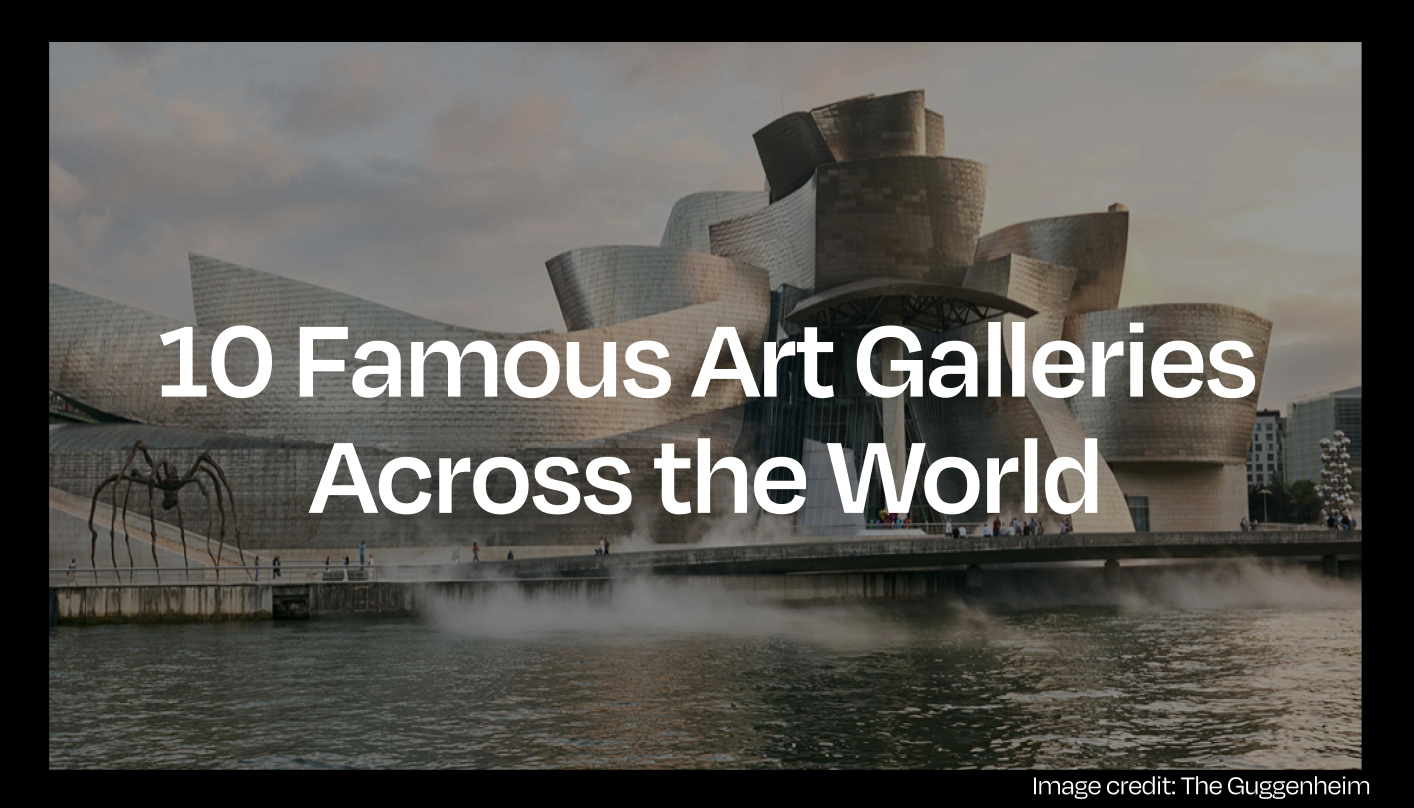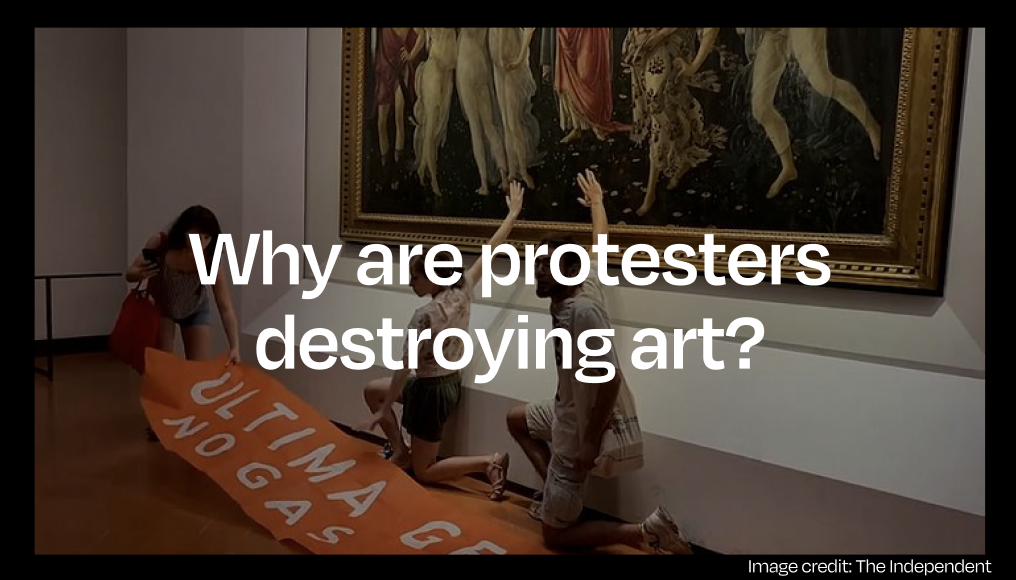
Controversial Artists: 5 Attention Grabbing Artworks!
Throughout the ages, controversial artists have consistently proven themselves with attention grabbing shows and performances. In an arena where boundaries are pushed and envelopes are relentlessly pushed further controversy has become a companion of artistic expression.
Any kind of attention, whether positive or negative, is valuable. Controversy can help promote an art piece or more importantly a message. We’ve gathered five controversial artists and their boldest artistic expressions to ask: Is there a limit to what art can be? Or are controversial artists the backbone of pushing new art to its limits?
1. “The Physical Impossibility of Death in the Mind of Someone Living” by Damien Hirst.
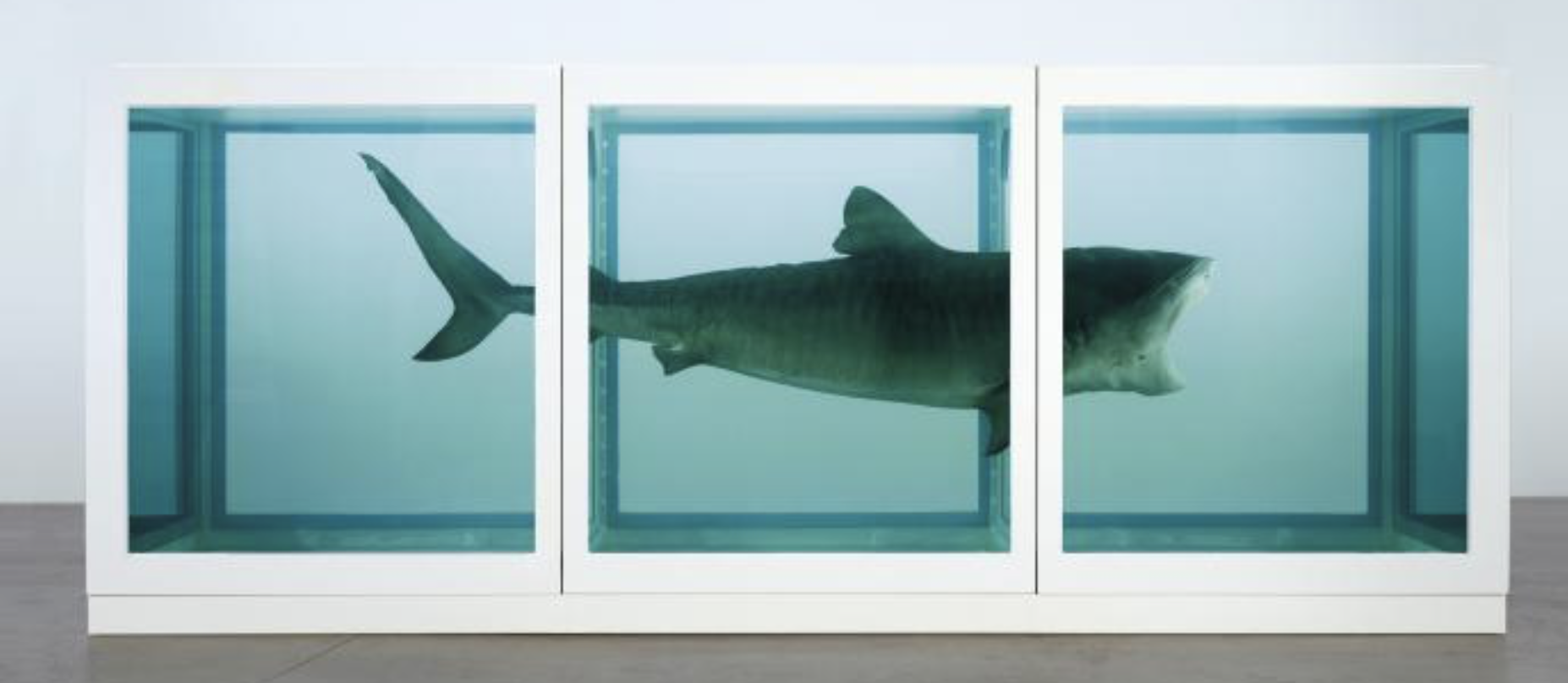
Damien Hirst, born in 1965, is a British artist known for his controversial and thought-provoking works. One of his most famous pieces is “The Physical Impossibility of Death in the Mind of Someone Living” (1991). This artwork consists of a preserved tiger shark suspended in a tank of formaldehyde.
Hirst’s choice of subject matter and medium immediately caused a stir in the art world and beyond. The artwork challenged traditional notions of art, as it presented a real, decaying animal rather than a traditional sculpture or painting. The use of formaldehyde to preserve the shark further heightened the controversial nature of the piece.

“The Physical Impossibility of Death in the Mind of Someone Living” raises various questions and interpretations. The shark, once a powerful and fearsome creature, now appears vulnerable and lifeless. It confronts viewers with themes of mortality, the cycle of life and death, and the fragility of existence. The title suggests that while death is a physical reality, the comprehension of it is a mental construct that can be difficult for the living to fully grasp.
Critics of controversial artists such as Hirst argue that it relies more on shock value and spectacle rather than artistic skill or deeper meaning. Some question the ethical implications of using animals in artworks, particularly in a way that may be seen as exploitative or sensationalist.
Nevertheless, “The Physical Impossibility of Death in the Mind of Someone Living” has become an iconic piece of contemporary art. It sparked debates about the nature of art, the role of shock in contemporary art, and the boundaries of what is acceptable in the art world. It also established Hirst as a leading figure in the Young British Artists movement, known for their provocative and confrontational artworks.
2. “Do women have to be naked to get into the Met. Museum?” by the Guerrilla Girls.

Prepare to be introduced to the audacious and captivating world of the Guerrilla Girls, a group of fearless feminist controversial artists who are unapologetically challenging the male-dominated art world. Among their remarkable body of work, one particular piece stands out with its provocative message: “Do women have to be naked to get into the Met. Museum?”.
The Guerrilla Girls employ their signature graphic style, combining bold text with powerful visual elements. The artwork confronts the glaring gender disparities that persist in the prestigious Metropolitan Museum of Art, an institution considered to be the pinnacle of artistic excellence.
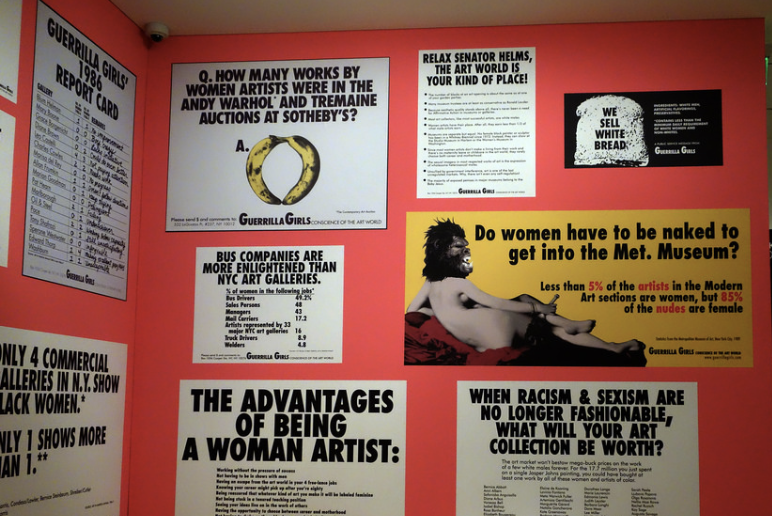
The central question posed by the Guerrilla Girls is both a rallying cry and a critique of the underlying biases embedded within the art establishment. They challenge the prevailing notion that female artists must resort to nudity or objectification to gain recognition and validation. By casting a spotlight on this issue, the Guerrilla Girls expose the systemic barriers that hinder women from achieving equal recognition and representation in the art world.
The artwork not only invites contemplation but also demands action. It serves as a call to arms, urging viewers to question the prevailing norms and demand change. The Guerrilla Girls employ satire and irony to disrupt the status quo, effectively subverting the dominant narrative and inspiring a reevaluation of gender dynamics within the art world.
Critics of the Guerrilla Girls argue that their confrontational tactics may overshadow the complexity and depth of their message. However, their unyielding commitment to challenging systemic sexism and inequality through their art has undoubtedly made a profound impact on the discourse surrounding gender representation in art institutions.
“Do women have to be naked to get into the Met. Museum?” has become an iconic emblem of the Guerrilla Girls’ fearless activism. It not only exposes the deep-rooted biases within the art world but also encourages a broader conversation about inclusivity and equity in all spheres of society. By leveraging their artistic prowess and unrelenting passion for change, the Guerrilla Girls continue to inspire and empower artists and activists alike to challenge the status quo and fight for a more inclusive future.
3. “Rhythm 0” by Marina Abramović.
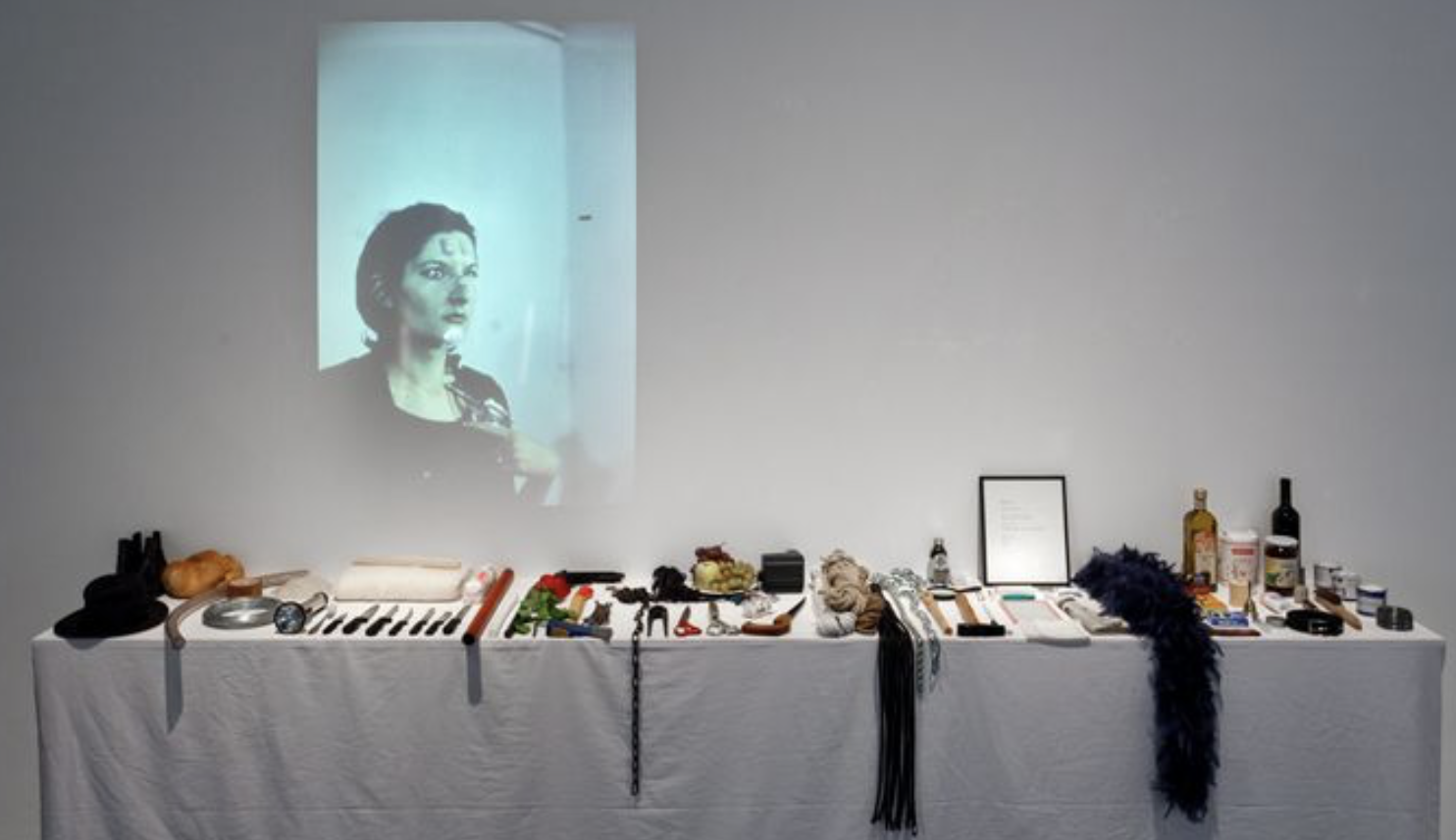
Among Marina Abramović’s daring and thought-provoking works, “Rhythm 0” stands out as a testament to her fearless exploration of human nature, vulnerability, and the limits of art.
“Rhythm 0,” presented in 1974, is a performance piece that blurs the line between artist and audience, inviting a raw and unfiltered interaction. Abramović placed a table in a gallery space and displayed a range of objects on it, including a rose, a feather, honey, a whip, a knife, and a gun loaded with a single bullet. She then stood motionless next to the table, committing herself to be entirely passive and receptive.
The audience became active participants in the artwork, with the power to use any of the objects on the table however they saw fit. What unfolded was a disturbing and powerful exploration of human behaviour. Some viewers approached with tenderness, interacting gently with Abramović or using the objects playfully. However, as the performance progressed, the situation grew increasingly intense and alarming.
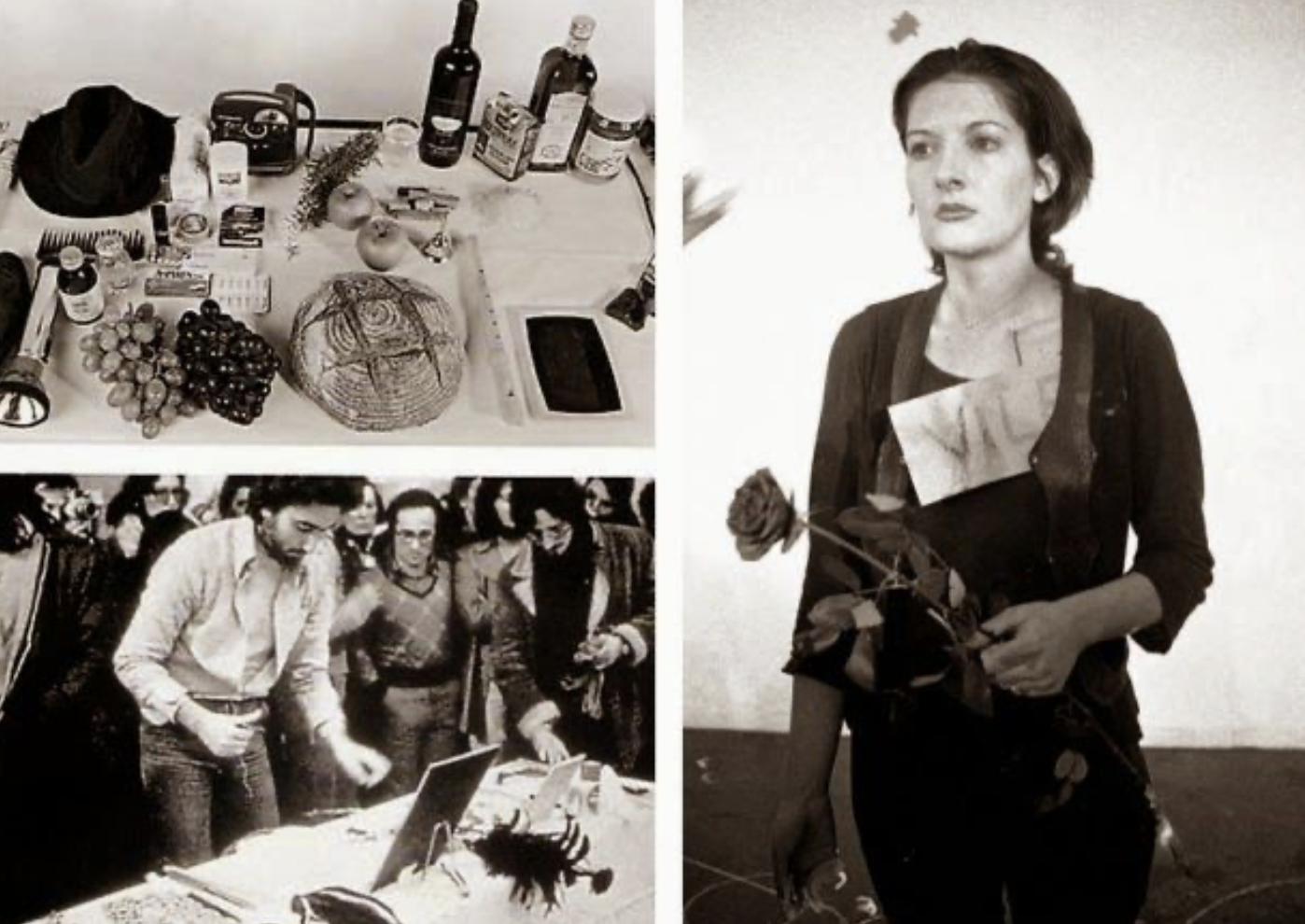
The boundaries of morality and personal responsibility were tested, as participants engaged in acts that ranged from innocuous to deeply disturbing. Abramović became an object, subjected to actions that included being cut, undressed, and even threatened with the loaded gun. The performance laid bare the potential for both compassion and cruelty within human nature.
“Rhythm 0” challenged the traditional dynamic of artistic creation, exposing the power dynamics between artist and audience. It confronted viewers with their own capacity for empathy or aggression, highlighting the vulnerability of the human body and the ethical implications of audience participation in art.
Critics argue that the extreme nature of the piece blurred ethical boundaries, raising concerns about the artist’s responsibility and the potential for harm. However, Abramović’s intention was to provoke a collective examination of human behavior and the role of art as a catalyst for self-reflection.
“Rhythm 0” remains a seminal work in Abramović’s body of art, a testament to her unwavering commitment to pushing artistic boundaries and challenging societal norms. It invites us to reflect on the complexity of human nature, the power dynamics inherent in art, and the fundamental questions of morality and responsibility. Abramović’s audacious performance continues to resonate and inspire, urging us to confront the depths of our own humanity and engage in profound introspection.
4. “Myra” by Marcus Harvey
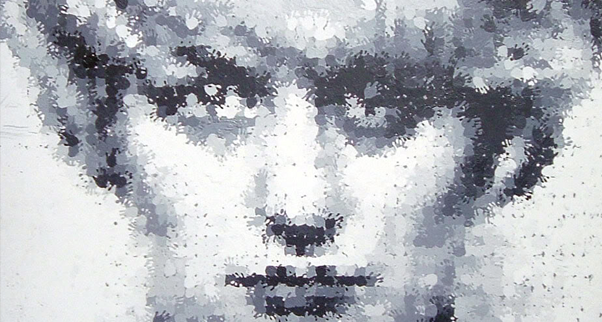
Another one of Britain’s controversial artists is Marcus Harvey. One of his most notable pieces is simply titled “Myra,” which stirred significant public debate and raised profound questions about the boundaries of art, representation, and the ethics of subject matter.
Created in 1995, “Myra” is a monumental portrait depicting Myra Hindley, a notorious figure in British history who, along with her partner Ian Brady, was responsible for the torture and murder of children in the 1960s. The artwork itself is composed of a mosaic made up of hundreds of children’s handprints, meticulously arranged to form Hindley’s face.
The immediate impact of “Myra” was profound and polarizing. The artwork ignited strong emotions and ignited a wide range of responses from the public, the media, and the art world. Many found the subject matter deeply unsettling and believed it to be in poor taste, as it seemed to exploit the memory of the victims and glorify a criminal. Others argued that the piece encouraged discourse about the nature of evil, the limits of forgiveness, and the responsibility of art to confront uncomfortable truths.

The controversy surrounding “Myra” also raised questions about the role of art in society and the artist’s responsibility when depicting sensitive and morally complex subjects. Critics argued that by presenting Hindley’s image in such a monumental and confrontational manner, Harvey risked transforming her into an icon rather than confronting the horrors of her actions.
However, supporters of the artwork pointed out that “Myra” was intended as a challenging commentary on society’s fascination with and idolisation of criminals, as well as a reflection on the capacity for evil that exists within individuals and society as a whole. It encouraged viewers to confront uncomfortable truths and consider the moral implications of their own voyeuristic tendencies.
Regardless of the controversy it generated, “Myra” succeeded in its intention to provoke dialogue and introspection. The artwork became a focal point for debates about the nature of art, the limits of representation, and the responsibility of controversial artists when tackling sensitive subject matter.
Marcus Harvey’s “Myra” serves as a stark reminder that art has the power to challenge and provoke, and that its impact can extend far beyond the walls of a gallery. It continues to inspire discussions about the role of art in confronting societal taboos, pushing boundaries, and forcing viewers to confront uncomfortable truths about humanity.
5. “The Last Judgment” by Michelangelo.
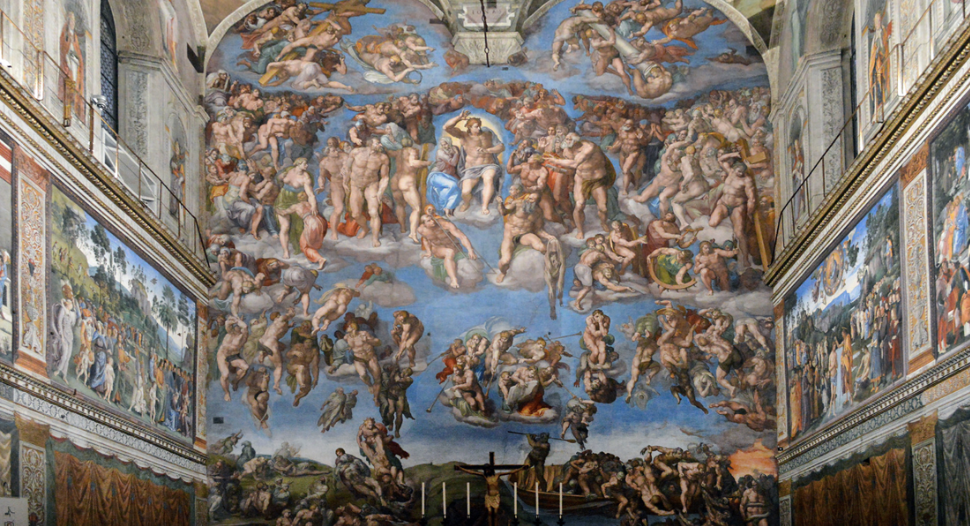
Michelangelo’s “The Last Judgment” is an awe-inspiring fresco located on the altar wall of the Sistine Chapel in Vatican City. Painted between 1536 and 1541, the artwork depicts the final judgment of souls and remains one of Michelangelo’s most renowned and controversial masterpieces.
The controversy surrounding “The Last Judgment” primarily stems from its audacious portrayal of nudity and the graphic depiction of human anatomy. Michelangelo’s decision to portray biblical figures, including Christ, saints, and the damned, in their natural form made him one of the controversial artists of the time.
The sheer scale of the fresco and the boldness of Michelangelo’s approach shocked many contemporaries. The inclusion of male and female figures in various states of undress, sometimes engaged in explicit or sensual poses, was deemed scandalous by some religious leaders and conservative members of the Church. Critics argued that such nudity was indecent and inappropriate for a sacred space like the Sistine Chapel.
The outcry against “The Last Judgment” led to subsequent alterations made by other artists in the years following Michelangelo’s death. Daniele da Volterra, a fellow artist, was commissioned to paint over some of the more provocative elements of the fresco, adding drapery and strategically placed fig leaves to cover the nudity. These alterations were intended to appease the concerns of those who deemed the original version offensive.

Despite the controversy, “The Last Judgment” remains an extraordinary achievement in artistic expression. It showcases Michelangelo’s remarkable skill in capturing the human form and evoking a sense of profound emotion and drama. The vast composition, with its intricate details and intricate arrangement of figures, creates a visual narrative that invites viewers to contemplate their own mortality and the eternal consequences of their actions.
Over time, attitudes towards nudity in art have evolved, and today, “The Last Judgment” is celebrated for its artistic merits and its impact on the history of Western art. The fresco stands as a testament to Michelangelo’s genius and his ability to push the boundaries of artistic conventions, even in the face of controversy.
“The Last Judgment” continues to inspire awe and provoke discussions about the intersection of art, religion, and societal norms. It serves as a reminder of the enduring power of art to challenge, provoke, and invite reflection on the complexities of the human condition.
Check out top-rated local artists near you!
Are you an artist ? Sign Up











